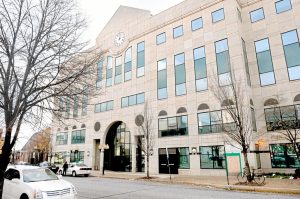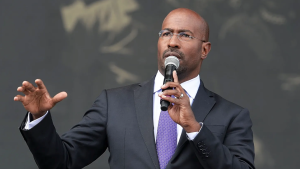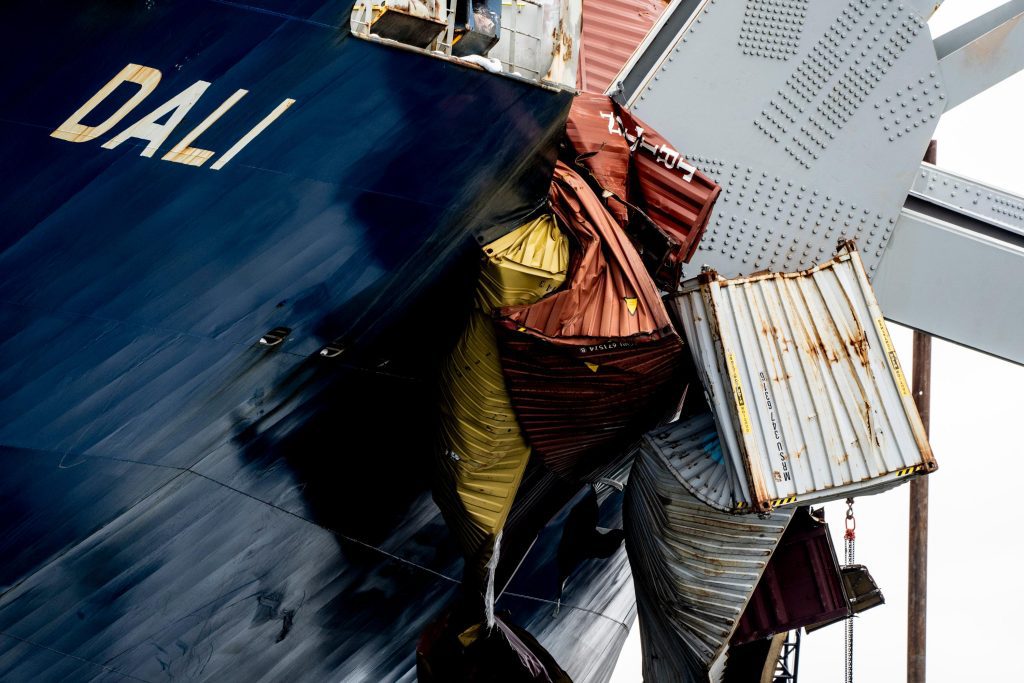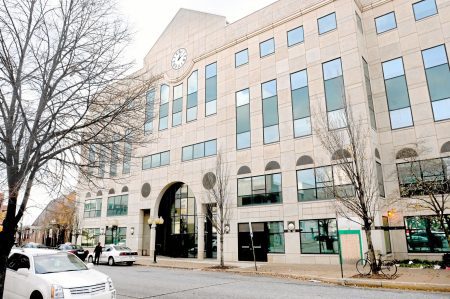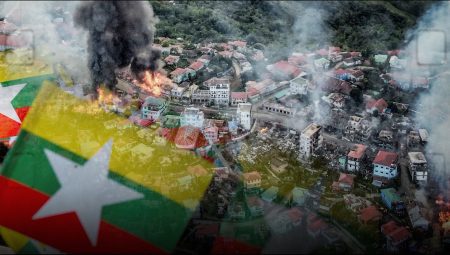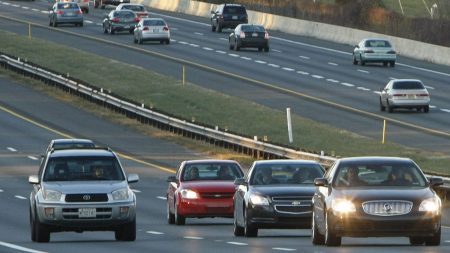By LEA SKENE (Associated Press)
BALTIMORE (AP) — A tugboat pushing a fuel barge was the first boat to use an alternative route to get around the wreckage of Baltimore’s collapsed Francis Scott Key Bridge, which had blocked traffic along the port’s main shipping route.
The barge supplying jet fuel to the Department of Defense left late Monday and was headed for Delaware’s Dover Air Force Base, although officials have said the temporary path is mainly open to boats helping with the cleanup. Some barges and tugs that have been stuck in the Port of Baltimore since the collapse are also scheduled to go through the alternate channel.
Authorities said they’re creating a second route on the southwest side of the main channel that will allow for larger vessels, but they didn’t specify when that might be available.
Gov. Wes Moore is scheduled to visit one of two centers that the Small Business Administration opened in the area to help companies get loans to assist them with losses caused by the disruption of the bridge collapse.
In Annapolis, a hearing is scheduled for a bill authorizing the use of state reserves to provide financial assistance to port employees who are out of work because of the bridge collapse. Lawmakers are working to pass the bill quickly in the last week of their legislative session, which ends Monday.
Crews are working to remove steel and concrete at the site of the bridge’s fatal collapse after a container ship lost power and crashed into a supporting column. On Sunday, dive teams examined parts of the bridge and inspected the ship, and workers in lifts used torches to cut above-water parts of the twisted steel superstructure.
Officials believe six workers fell to their deaths in the collapse, including two whose bodies were found last week. Two other workers survived.
Moore, a Democrat, said at a Monday afternoon news conference that his main focus is recovering the four remaining bodies, followed by reopening shipping channels. He acknowledged the urgency but also emphasized the significant risks. Crews have described the mangled steel girders of the fallen bridge as “chaotic wreckage,” he said.
“What we’re finding is it is more complicated than we hoped for initially,” said U.S. Coast Guard Rear Admiral Shannon Gilreath.
Meanwhile, the ship remains stationary, and its 21 crew members remain on board for now, officials said.
President Joe Biden is expected to visit the collapse site Friday to meet with state and local officials and assess federal response efforts.
The bridge collapsed as the cargo ship Dali lost power March 26 shortly after leaving Baltimore on its way to Sri Lanka. The ship issued a mayday alert, which allowed just enough time for police to stop traffic, but not enough to save a roadwork crew filling potholes on the bridge.
The Dali is managed by Synergy Marine Group and owned by Grace Ocean Private Ltd., both of Singapore. Danish shipping giant Maersk chartered the Dali.
Synergy and Grace Ocean submitted a legal request on Monday to limit their legal responsibility, which is a standard but important step for cases dealt with under U.S. maritime law. A federal court in Maryland will ultimately determine who is at fault and the amount they have to pay.
The request aims to set a maximum of about $43.6 million for the companies’ responsibility. It calculates that the ship itself is worth up to $90 million and was owed over $1.1 million in income from carrying goods. The calculation also subtracts two main expenses: at least $28 million for repairs and at least $19.5 million for salvaging.
Authorities are working to figure out how to reconstruct the significant bridge, which was finished in 1977. It carried Interstate 695 around southeast Baltimore and became a symbol of the city’s blue-collar roots and maritime culture.
Congress is likely to consider assistance packages to aid those who lose jobs or businesses due to the extended closure of the Port of Baltimore. The port handles more cars and farm equipment than any other U.S. facility.
___
This report includes contributions from Associated Press journalists Brian Witte in Annapolis; Tassanee Vegpongsa in Baltimore; Sarah Brumfield in Washington; Michael Kunzelman in College Park, Maryland; and Rebecca Boone in Boise, Idaho.
